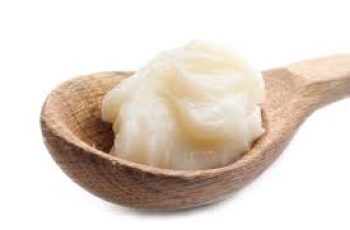
What is Salicylic Acid?
If you find yourself searching for a blemish battling formula, chances are, it will include salicylic acid. The clever BHA, also known as beta hydroxy acid, is one of the most used and effective anti-blemish ingredients. Whether it’s an over-the-counter product, or of a professional grade concentrate, the potent powerhouse will make light work of any spots, pimples, or zits that have well and truly outstayed their welcome.
If you are wanting to know more about the skincare benefits, we have a dedicated blog post about the full benefits you can expect to see when introducing the powerful acid to your routine.
What is salicylic acid?
Understanding what salicylic acid actually is can feel a little overwhelming but understanding how it works on the skin is important to help establish how to introduce it into your daily routine. So, let’s start off by getting a better understanding of why the selection of acids are called alpha hydroxy acids and beta hydroxy acids. This is basically connected to the structure of the acids and how many times the molecule separates, for example, if it splits into one carbon atom, it becomes an alpha hydroxy acid (AHA) and if it separates into two carbon atoms, it’s a beta hydroxy acid (BHA).
Both groups of acids provide exfoliation to the top layer of the skin, the main difference is that salicylic acid and other BHAs are oil-soluble meaning they are able to penetrate deeply into the pores reaching an area of the skin other AHAs, such as glycolic acid and lactic acid are unable to. The exfoliation and ability to unclog the pores of any build-up of excess sebum, dirt, and bacteria your complexion is left revived, invigorated, and glowing, you’ll also find it is able to absorb other actives rapidly giving you faster results.
If you find you are still a little confused about the main difference between AHAs and BHAs there is more information about them over on The Beauty Insiders.
What is salicylic acid mainly used for?
Salicylic acid is known for being a highly potent anti-blemish ingredient. With its ability to slough away dead skin cells and work deeply in the pores, it can combat active spots and blemishes whilst simultaneously preventing any further breakouts from developing.
With medical grade salicylic acid providing peeling properties it isn’t just acne combating skincare products that contain the BHA. You’ll also find that those with dry skin conditions such as psoriasis and dandruff can be treated with specifically designed products. With this comes a word of warning, and that is to ensure you have consulted with a doctor or dermatologist to check including salicylic acid into your routine will be a benefit and avoid unwanted irritations.
Finally, there are some concerns, such as corns, calluses and warts that can also be removed and treated using a high concentrate of salicylic acid. This should only be used by a medically trained professional and not tried at home due to the potency of the BHA can lead to a lot of irritation, skin reactions, sever dryness, and discomfort.
Does lemon juice have salicylic acid?
Not really, although it does contain similar properties as salicylic acid, such as antioxidants to help combat the skin damaging free radicals, such as UV exposure, pollution, and other environmental aggressors.
In regard to lemon juice, you’ll find that it contains citric acid and vitamin C, both of which provide exfoliation to the outer layers of the skin and can treat signs of hyperpigmentation and dark spots. The downside to using lemon juice on the face to help target acne and blemishes is the fact it can become excessively drying to the skin, especially if you decide to use pure lemon juice as this will lack hydrating ingredients, such as hyaluronic acid.
As tempting as it may be to use lemon juice on the skin, I would advise against this as the pH levels of the juice will be too acidic which will disrupt the levels that naturally occur on the skin. An imbalance will lead to a flare-up in acne, dry patches of skin, redness, itchiness, and general discomfort.
How can I make salicylic acid peel at home?
Making a salicylic acid peel at home is an easier task than many may think, however, if you are wanting to give this a try, it is very important you consult with a doctor beforehand. Once you have the green light from your GP here is how you can use a salicylic acid peel at home.
Step one- Cleanse the skin and pat dry
Step two- Take your bottle of salicylic acid, preferably nothing higher than 15% and mix it in a bowl with your choice of carrier oil, such as sweet almond or olive oil
Step three- Using a fan brush, apply the salicylic acid and oil mixture over the skin avoiding the eye area
Step four- Ensure you keep a close eye on how your skin is feeling and leave the mixture on the face for no longer than 2 minutes
Step five- Rinse the mixture off the skin
Step six- Leave your skin slightly damp and apply a serum packed with hyaluronic acid to lock moisture into the skin
Step seven- Follow this in the morning with a sunscreen of SPF 50 for added protection from UV exposure
As I have already mentioned, do not try this at home without first consulting with your doctor. Salicylic acid is a highly potent ingredient which needs to be introduced into your routine slowly so only perform an at home acid peel once your skin has built some tolerance.
Can I use salicylic acid everyday? Yes, you can, but with caution as it very much depends on your skin type and whether your established routine contains other potent skin actives. This doesn’t mean you should avoid using salicylic acid but should remain mindful of how and when you should apply it to the skin. There is a lot more detail about using salicylic acid everyday over on our dedicated blog post, so check that out. There you have some answers to the questions we have received about what salicylic acid and the benefits you can expect to see on the skin. Don’t forget if you have any more skincare questions, come, and find us on Instagram.
DQH Can I use salicylic acid first and then vitamin C?
It’s easy to create a skincare routine, but knowing how to use it is another thing entirely. In most cases, if you’re not getting the desired skin results, it could be due to the layering of conflicting ingredients. So, is it possible that salicylic acid and vitamin C are such ingredients? Or are these active ingredients the duo that’s been missing from your skincare routine? If you want answers, stick around because today we are going to explain the benefits of salicylic acid and vitamin C and how they can be used in your daily life.
What are the benefits of salicylic acid for skin?
Salicylic acid is one of the most commonly used beta hydroxy acids and is favored by many people with oily, acne-prone skin. This acid is derived from willow bark, and unlike its water-soluble relatives (called alpha-hydroxy acids), salicylic acid is oil-soluble, which means it can penetrate deeper into the lower layers of the skin. Once it reaches the lower layers, it can help unclog pores of excess sebum, dirt, bacteria, debris, and impurities. This results in clearer skin tones and greater definition.
Not only does salicylic acid benefit the underlying layers, but the outer surface of the skin benefits as well. When applied to the skin, salicylic acid removes the buildup of dead skin cells. This is accomplished by breaking the bonds that hold dead cells to the surface. Over time, this can cause the complexion to look dull and prone to acne, blackheads, and other blemishes.
If you’d like to learn more about salicylic acid and how it can improve your skin, check out this dedicated blog post from a beauty insider.
What are the benefits of vitamin C for skin?
Vitamin C is considered one of the most powerful antioxidants, which means it is very effective at fighting free radicals and preventing them from causing further skin damage. Examples of free radicals include pollution, central heating, UV rays and harsh climate. They attack proteins, fats and cell membranes as soon as they come into contact with the skin, causing signs of premature aging such as fine lines and wrinkles as well as hyperpigmentation, flaky patches of skin and loss of elasticity.
Many people usually prefer to use vitamin C in their morning routine as this ingredient gives the complexion a radiant glow. You’ll also find that vitamin C can target areas of hyperpigmentation, plumping the skin and reducing the appearance of fine lines and wrinkles.
The thing about vitamin C is that there are a lot of outdated studies going back to the 1950s that describe vitamin C as an unstable skin component. Thanks to improvements in modern technology, this is no longer the case as all products now contain a stable form of vitamin C.
Visit The Beauty Insider to learn more about vitamin C. So please check out our blog post.
Can I use salicylic acid first and then vitamin C?
Yes, you absolutely can. In fact, it’s thought that using salicylic acid before using vitamin C ensures it penetrates faster and works faster.
This is an efficient way to utilize two power sources, and the reason has to do with pH. For example, the skin’s natural pH is about 4.7, making it slightly acidic. Salicylic acid and vitamin C are also both acidic, and you’ll find that vitamin C is absorbed quickly into the skin. Therefore, using salicylic acid beforehand can increase the acidity of the skin and allow vitamin C to penetrate into the skin faster.
While this is considered an effective way to combine two powerful ingredients, you need to be aware of your skin type and how it reacts to certain active ingredients. Even people with perfect, normal skin can experience skin sensitivity and irritation. Therefore, always consult a doctor or dermatologist before using any new products on your skin.
It’s also important to follow skin application rules. In this case, you need to use the product correctly to ensure you get the best results for your skin. If you’re not sure what I mean, the basic rule for skin is to start with the thinnest consistency and work your way up to the thickest consistency. This prevents a barrier from forming on the surface, preventing other active ingredients from penetrating the skin.
Can I use salicylic acid at night and vitamin C in the morning?
Yes, absolutely, this is considered the most effective way to get returns without any adverse side effects. This is because there is enough time between applications to ensure that the skin’s pH levels return to balance.
You’ll also find that Vitamin C is rich in antioxidants and is perfect for use in the morning to ensure your skin is protected and looking its healthiest. Due to the small size of salicylic acid molecules, it is an acid that is able to reach the deepest parts of the skin. While this is effective at keeping skin clear, it also increases the risk of irritation and photosensitivity. Therefore, many people prefer to use powerful BHAs in their evening routine without exposure to UV rays, pollution, or harsh weather.
Warning: If you avoid using sunscreen every day, none of these ingredients will do what your skin needs. The combination of chemical peels and powerful ingredients increases the risk of further damage to the skin’s surface. Use SPF 50 every day to keep your skin protected and your lipid barrier healthy, even on cloudy days, keeping your skin in top condition.


